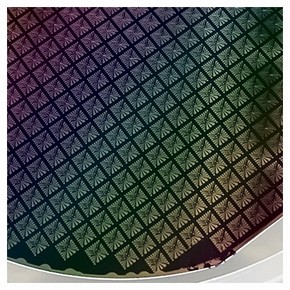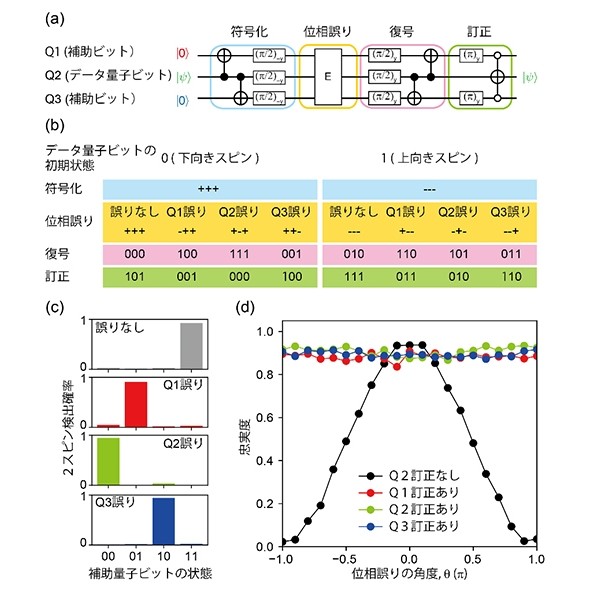Implemented a 3-qubit phase error correction circuit
In August 2022, a research team at the Institute of Physical and Chemical Research (RIKEN) announced that it had demonstrated three-qubit quantum error correction using electron spins in a silicon quantum dot device. It is attracting attention as a basic technology for realizing quantum computers using silicon semiconductors.

Quantum computers are affected by noise caused by impurities and heat, which can cause errors in quantum information. Therefore, in order to perform quantum computation at a practical level, it is necessary to implement a circuit that corrects errors (quantum error correction). Achieving this would require at least three qubits. Quantum gates with two qubits already exist, but it has been extremely difficult to control three or more qubits with high precision. This time, the research team fabricated a qubit device using electron spins in a silicon quantum dot device, and realized quantum error correction with three qubits. Specifically, a silicon/silicon germanium semiconductor substrate was microfabricated to fabricate a quantum dot structure. By controlling the voltage applied to the gate electrode, it is possible to form quantum dots with a high degree of freedom and control the state of their electron spins.

The research team has so far realized quantum gates with up to two qubits. In this research, in addition to this, a 3-qubit gate "Toffoli gate" was realized. The Toffoli gate can flip the state of the target qubit (data qubit) only when both ancillary qubits are in the '0' state. Quantum error correction is said to be able to correct the state of data qubits based on detected errors. In quantum error correction experiments, we implemented a 3-qubit phase error correction circuit using this Toffoli gate and implemented it in a silicon qubit sample. Using this sample, we confirmed that quantum error detection and restoration to the initial state are possible.

Researcher Kenta Takeda, Postdoctoral Researcher Akihito Noiri, and Group Director Seigo Tarucha (Semiconductor Quantum Information Device Research Team Leader, Quantum Computer Research Center) of the Quantum Functional Systems Research Group, RIKEN Center for Emergent Matter Science







